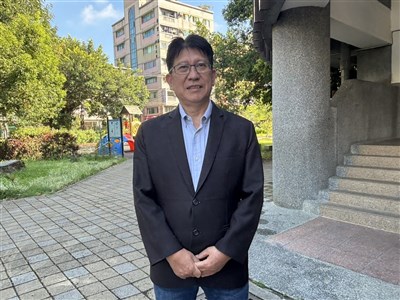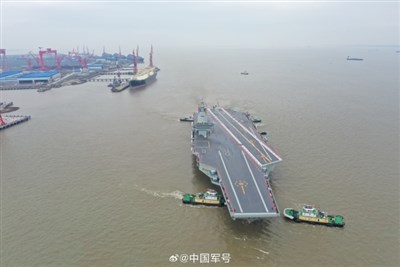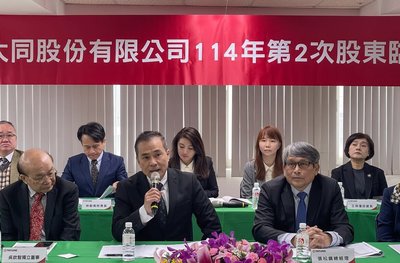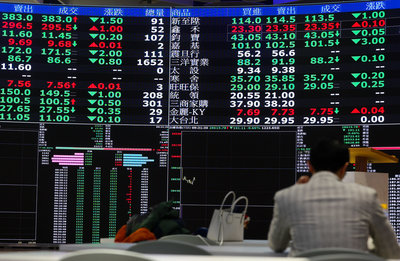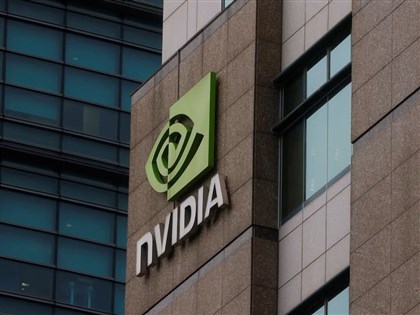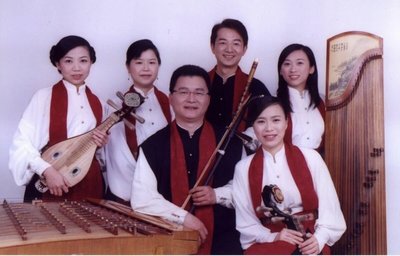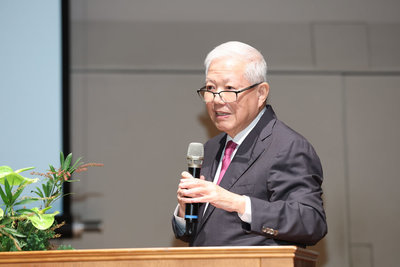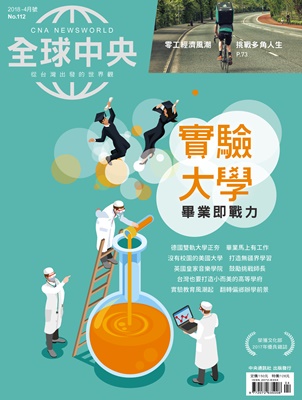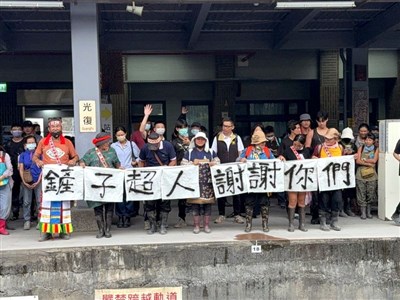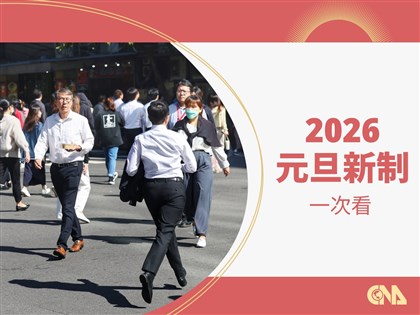伽利略時代的歐洲科學
撰文及考題設計/British Council 英協教育中心 Brian Welter 中譯/陳怡君 (中央社編譯)
Italian scientist Galileo Galilei (1564-1642) was as famous for his struggles with the authorities of his day as for his scientific discoveries, which included the nature of the physical universe. An able inventor, he also significantly improved the telescope and used it to prove his theories about astronomy. He faced controversy in part because science was undergoing profound upheaval.
義大利科學家伽利略(1564-1642)與當代政府的對抗,和他的科學發現─包括對於物理宇宙本質的研究同樣聞名。伽利略是個了不起的發明家, 他大幅加強望遠鏡的功能,並用此證明他的天文學理論。然而伽利略受到廣泛質疑的部分原因在於,當年的科學正處於深刻動盪的狀態。
Much of this deep change was related to cosmology, which is the study of the universe, including the Earth’s place in relation to the Sun and the stars. Up to Galileo’s day, people commonly assumed that, while the Earth was indeed spherical, the Sun orbited the Earth rather than the other way around. The Earth was the centre of the universe, in other words.
這項巨大的變化大多與宇宙論有關。宇宙論即是研究宇宙的科學,包括地球與太陽、其他星體的關係。在伽利略的年代,縱使地球是顆球體,而人們卻仍大多相信太陽是環繞著地球運轉的;換句話說,地球是宇宙的中心。
Two g reat a ncient th i n kers st ill st rongly influenced European science in the early seventeenth century: Aristotle (died 322 BC) and Ptolemy (died 170). Concerning cosmology, Aristotle believed in an unchanging universe. Stars, comets, planets, and the Sun revolved around the Earth in perfectly circular patterns; each element in the sky belonged to a certain level or sphere. Unfortunately, this failed to explain irregularities in the sky such as why new stars or comets appeared from time to time or why planets did not in fact follow perfectly circular paths. Attempting to explain such irregularities made it a complicated system. Ptolemy several centuries later endeavored to simplify the system, but because it was a faulty model to begin with, he ended up making it even more complicated.
在17世紀初,兩位偉大的古代思想家:亞里斯多德(逝於西元前322年)與托勒密(逝於公元170 年)對歐洲科學具強大影響力。針對宇宙論,亞里斯多德深信一個恆定的宇宙。恆星、彗星、行星與太陽皆以完美的圓形軌道環繞地球;天空中的每個元素皆屬於某氣層或球體;然而不幸地,這個理論無法解釋天空中的不規律性,如為何新興星體或彗星的隨機出現?為何星球並未以完美的圓形軌道運行?為了嘗試解釋這些不規律性讓學說變得相當複雜。數個世紀之後,托勒密曾嘗試簡化這套系統理論,但因這理論即根據在錯誤的命題上,他最後僅讓理論更為複雜。
Despite these shortcomings , both these systems were deeply entrenched in the European imagination. When a Polish scientist Nicholas Copernicus (1473-1543) wrote a book explaining that the Earth actually revolved around the Sun, many people thought it was foolish, or at best only a mathematical theory. The Greek word for Sun being helios, this model became known as the heliocentric, or Sun-centred, theory. Despite the initial lack of enthusiasm for the Copernican system, as decades passed it became more and more obvious that the Earth did indeed revolve around the Sun. The growing body of knowledge on the universe, especially in Galileo’s day, would eventually prove Copernicus right. 儘管有這些缺陷,兩套學說仍從此根深蒂固於歐洲人的想像。當波蘭科學家尼可拉‧哥白尼 (1473-1543)撰寫一本書解釋地球其實是環繞太陽而運行,許多人認為他愚蠢至極,或頂多是個數學理論。希臘文稱太陽為Helios,因此這套學說被稱為Heliocentric(太陽中心理論)。儘管哥白尼的理論系統起初並不受青睞,數十年後地球環繞太陽的種種證據逐趨明朗。對於宇宙的知識體系,尤其在伽利略的年代,終究證實哥白尼是正確的。
Many of these theories were hotly debated in Rome, an important centre of European science at the time. A group of religious men there, the Jesu¬its, had heavily invested in science because they believed that the universe could be logically under¬stood. Surprisingly, these researchers themselves did not always act logically when they debated Co¬pernicus’s theory.
許多類似的理論在羅馬受到熱烈爭辯,羅馬在當時是歐洲科學的重鎮。一群稱做耶穌會士的宗教人士重金投資於科學研究,因為他們深信宇宙是可以透過邏輯去理解。然而令人訝異的是,這些研究人員在爭論哥白尼的理論時並不總是依照邏輯行事。
Thus when Galileo saw through one of his tele¬scopes that the moon’s surface was not shiny and smooth as Aristotle said it was, but rocky and full of peaks and valleys just like on Earth, many people disbelieved him. His supporters in Rome or Flor¬ence would hold gatherings with him as the guest of honour so that he could show the skeptics the moon through his telescope. Both he and his telescope were the wonders of the time. Because night con¬ditions were not always favourable to viewing the moon’s surface, many people still continued to fol¬low the old ways, unconvinced of the fresh insights about the moon. In fact, those people felt threatened by Galileo’s findings. Instead of modifying their perspective, they wanted to stop and even punish Galileo.
因此當伽利略透過他的望遠鏡發現月亮的表面其實如地球般布滿岩石、高峰與山谷,並非如亞里斯多德所描述的光亮與平滑時,許多人並不相信他。他在羅馬與佛羅倫斯的支持者為了他舉行集會,邀請他向質疑論者提供他望遠鏡去觀察月球。在當時,他與他的望遠鏡都是奇觀。由於並非每晚的情況都適合觀測月球表面,許多人們仍持續相信古老學說,拒絕相信對於月球新理論。事實上,那些人因伽利略的發現而感受到威脅。與其修正他們的觀點,他們選擇阻止並懲罰伽利略。
The famous trial of Galileo in Rome reflected not only some people’s narrow views, but also how vi-brant yet unsettled Italian and European science was at the time; new discoveries, often due to techno¬logical achievements, ceaselessly confronted people.
伽利略在羅馬接受審判的著名例子,不僅反映部分人士狹隘的觀點,也顯現當時義大利和歐洲科學百家爭鳴莫衷一是的情況。科技上的成就促成了新的發現,不停地挑戰人們的想法。
What did unite the scientists and authorities of Galileo’s time, whether they were on the great sci-entist’s side or not, was the search for the truth. All of the individuals involved believed that the laws of the universe could be known. People were willing to make sacrifices for this quest. In Galileo’s case, this meant a limitation on his liberty of movement, social interaction, and work, as his insistence on the heliocentric model of the universe meant that the au¬thorities tried to silence him. He spent the last years of his life in limited freedom and declining health which largely came from the stress of fighting pow¬erful figures. The science of his time benefited from his sacrifices. Scientists the world over regard him as a model and hero, but they often forget that his work is known only because of the respect science was given by many people at that time, even those who opposed him.
在伽利略的年代,無論政府是否真的站在科學家這邊,真正使科學家與執政當局團結一起的, 是追求真相的信念。每個參與的個體深信宇宙定律是可以被了解的,而人們願意為了追求真相而犧牲。以伽利略來說,他因堅持太陽中心說,當局為讓他噤聲而限制他的遷徙自由、社會互動與工作。他的晚年自由受限,健康惡化的主因來自與當權者對抗的壓力,然而他所處的當代科學因他的犧牲而受益。世界各地的科學家視他為典範與英雄,但他們往往忘記,伽利略的成就為人所知,是因為當時許多人敬仰科學,即使是反對他的人。
本網站之文字、圖片及影音,非經授權,不得轉載、公開播送或公開傳輸及利用。

